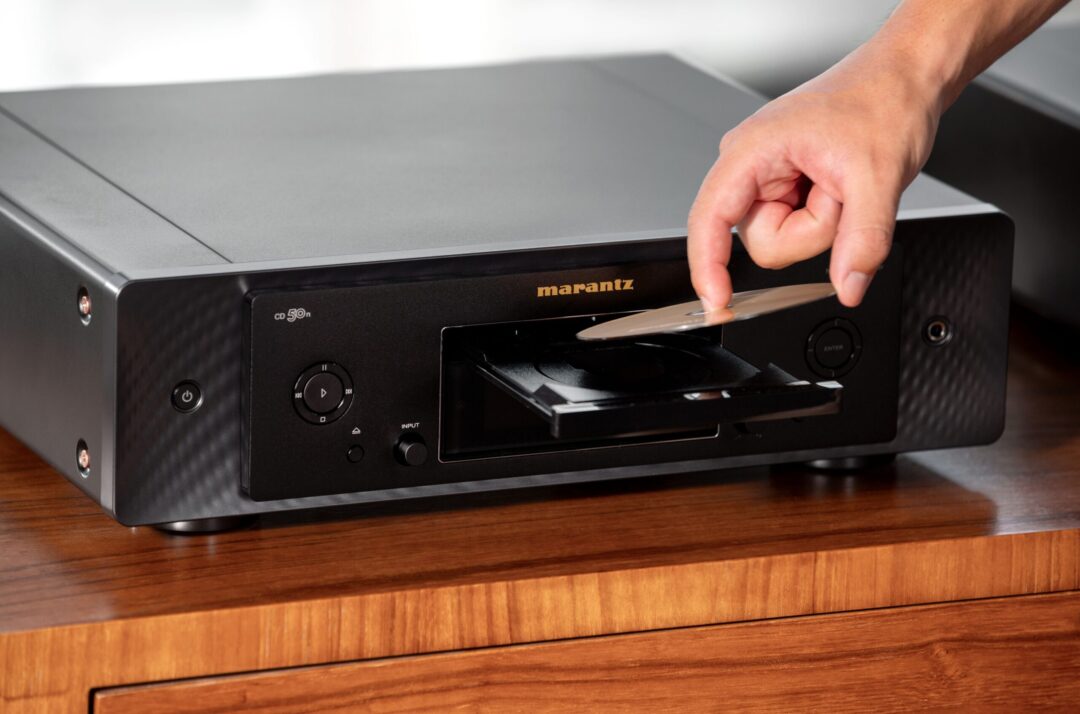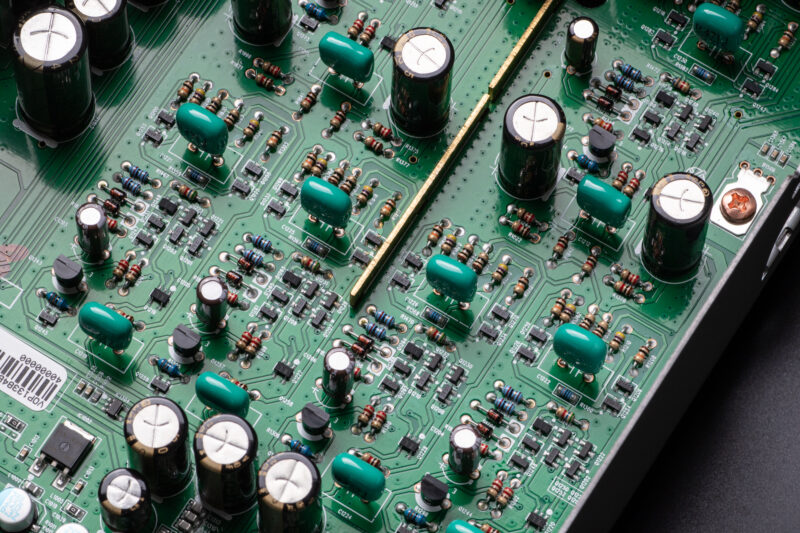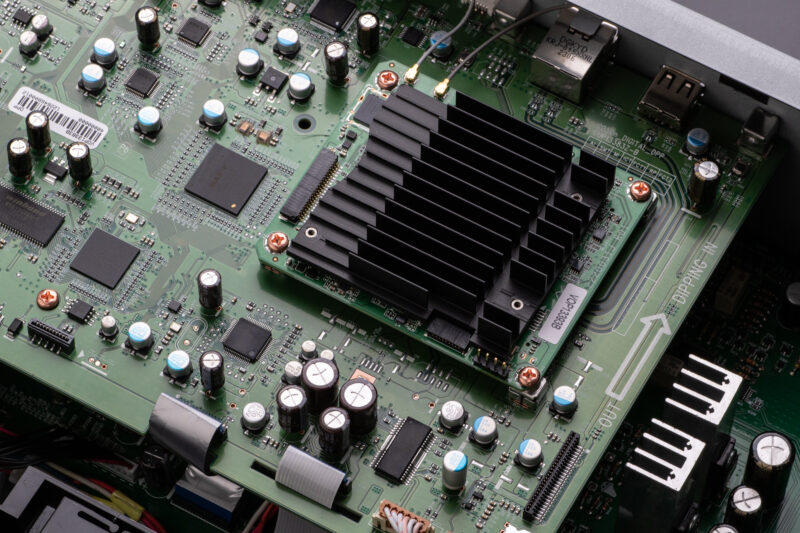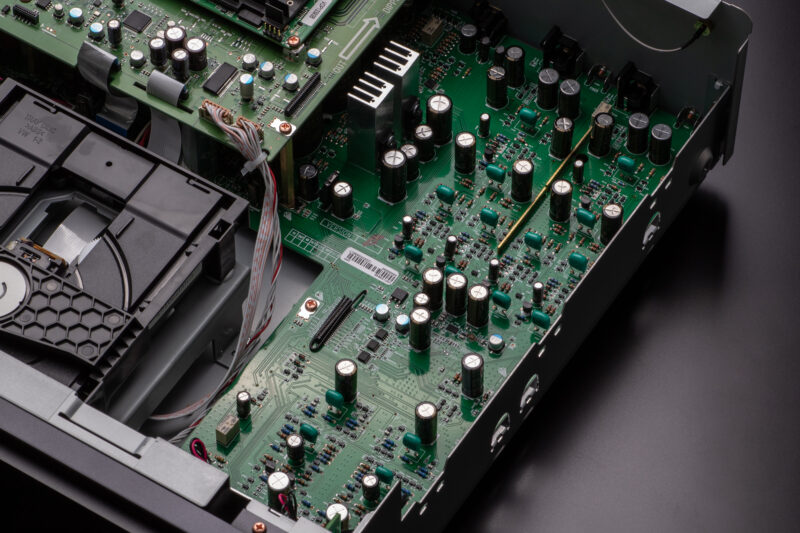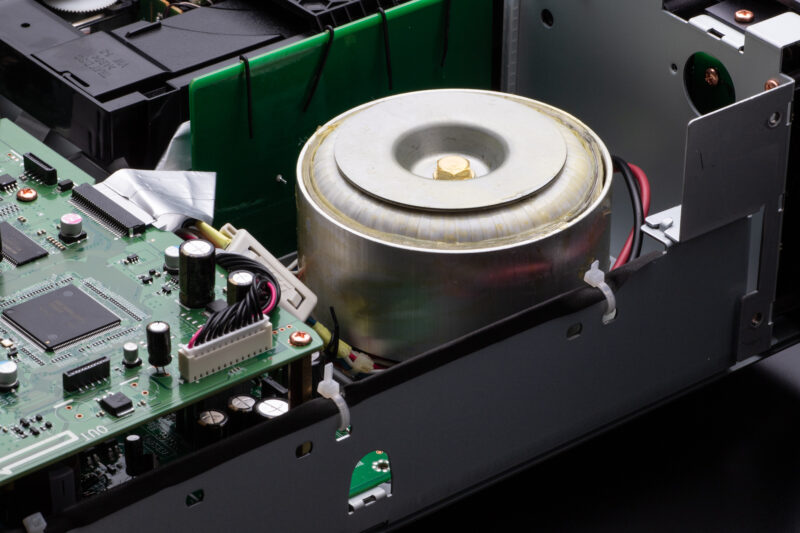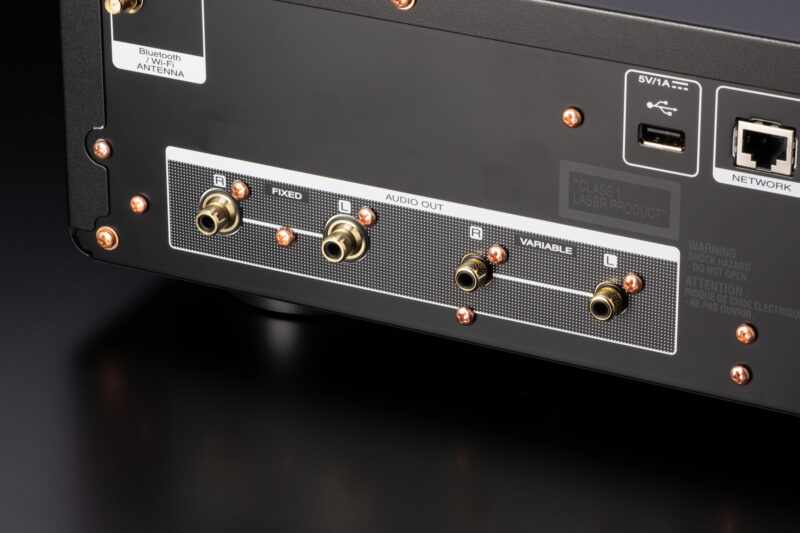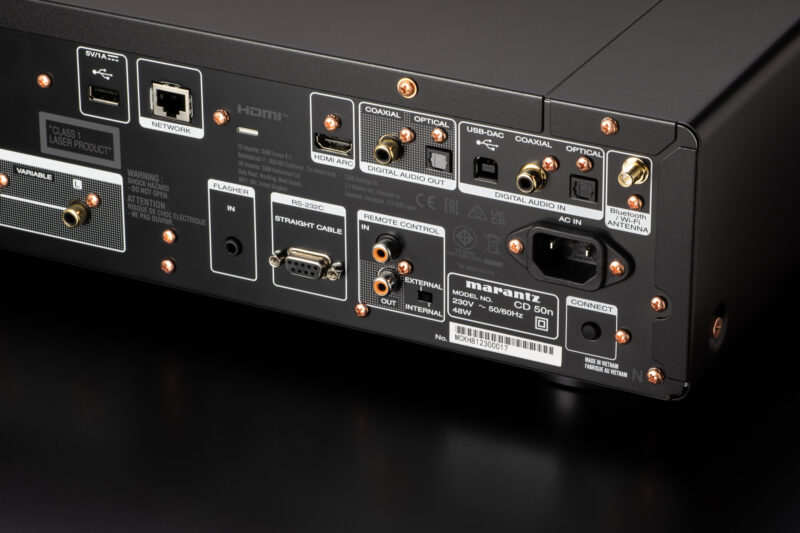With the CD 50n, Marantz is well on its way to renewal. It is the third CD player – and the seventh product – with the characteristic design and familiar Marantz qualities.
The player is positioned between the excellent Marantz SACD 30n with SACD CD and network and the simpler CD 60. Which is a pure CD player.
In this way, it fills a gap in the product range. Perfect for those who don’t own a single SACD and don’t need so many inputs, but would like to be able to stream their music wirelessly.
They get that in the CD 50n, which is built on the same platform as the SACD 30n, with slightly simpler technology inside and pretty much the same capabilities. It lacks a digital input, but the CD 50n has an HDMI input with audio return (ARC). This means it fits nicely in the living room, where TV audio is connected via the player.
Marantz's latest CD player is also a network player, and an internet radio, and a DAC, and a preamplifier, and a….
It also has both fixed RCA outputs for connection to the system and variable outputs with volume adjustment. For those who have a pair of active speakers and don’t need to connect an amplifier.
There’s also a third option: the player can be connected to a pair of wireless speakers – such as the KEF LS60 Wireless – and then you can stream via CD 50n, play CDs and direct the TV sound via the player.
Spotify and Tidal
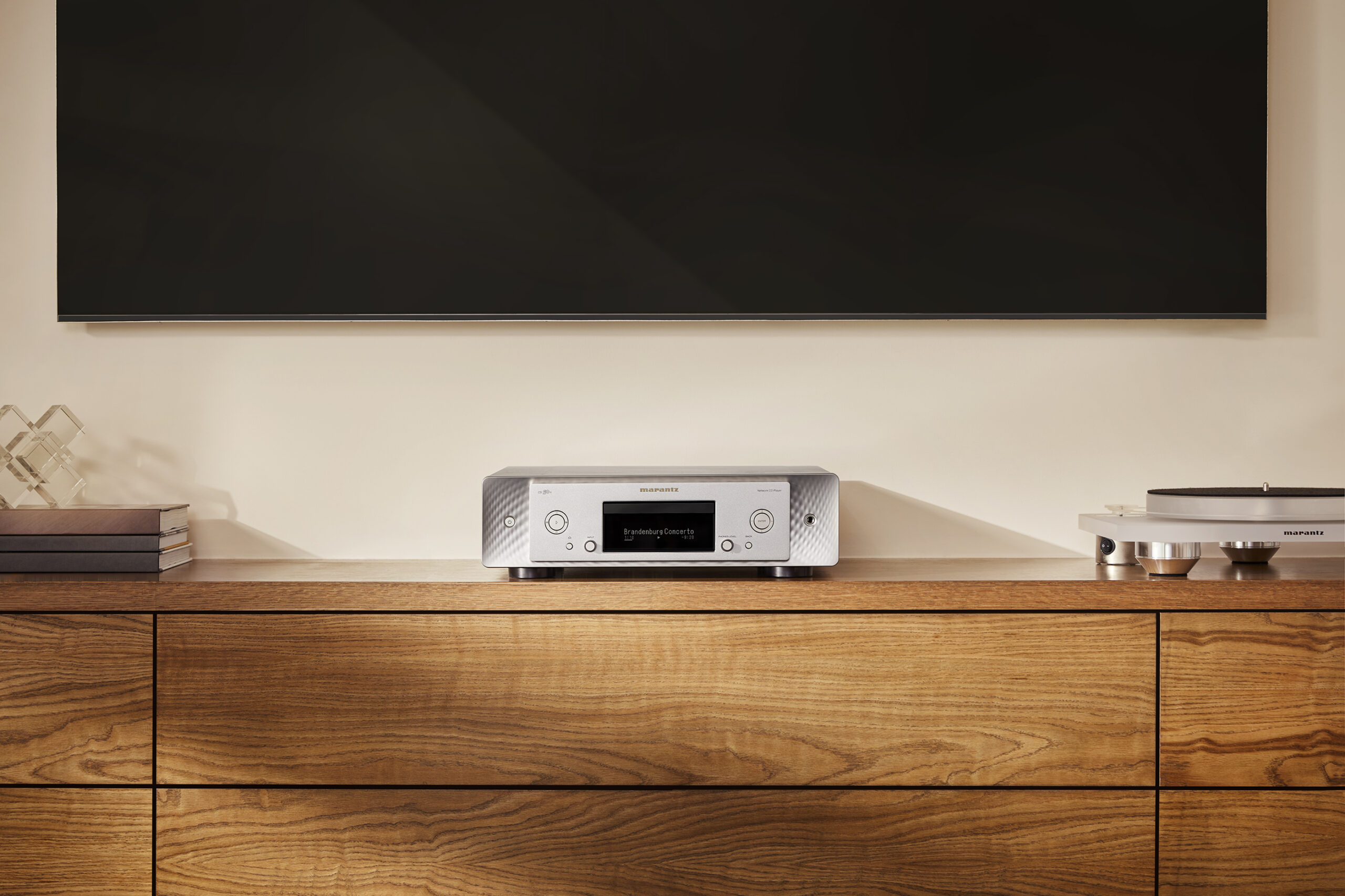
It has two digital inputs for other audio sources and a USB connector for the PC, both of which go to an ESS Sabre digital converter that supports up to 32 bit and 384 kHz PCM via USB, 24 bit/192 kHz DSD/FLAC.
It also supports streaming services like Spotify and Tidal, has AirPlay 2 and Marantz and Denon’s HEOS streaming platform built in, which is controlled via the app.
Wireless and Ethernet
For convenience, it also has Bluetooth in addition to wireless streaming over a network or via an Ethernet cable from the router. With AirPlay 2, you can stream throughout the house if you have multiple AirPlay 2 devices. The same applies if you have two HEOS devices.
It streams all formats, but the DAC does not have decoding for MQA files.
HDAM
I mentioned that it’s not as technically advanced as the SACD 30n, which has Marantz Musical Mastering (MMM) instead of a conventional DAC. MMM converts PCM (CD 44.1 kHz) to DSD 11.2 MHz and uses two system clocks working in parallel to provide more accurate upsampling of the signal up to 384 kHz.
The digital DSD signal is then converted to analogue and Marantz’s analogue HDAM amplifier modules take over. HDAM, or Hyper-Dynamic Amplifier Module, is Marantz’s integrated amplifier circuitry, which is also used in their amplifiers. Marantz believes they work better than conventional op-amp chips because HDAM allows them to lower noise and distortion while increasing bandwidth.
The SACD 30n contains HDAM SA2 modules, while the CD 50n uses a simpler HDAM module in combination with HDAM SA2.
Marantz Musical Digital Filters
In the CD 50n there are also two system clocks, but here together with a 32-bit ESS Sabre DAC.
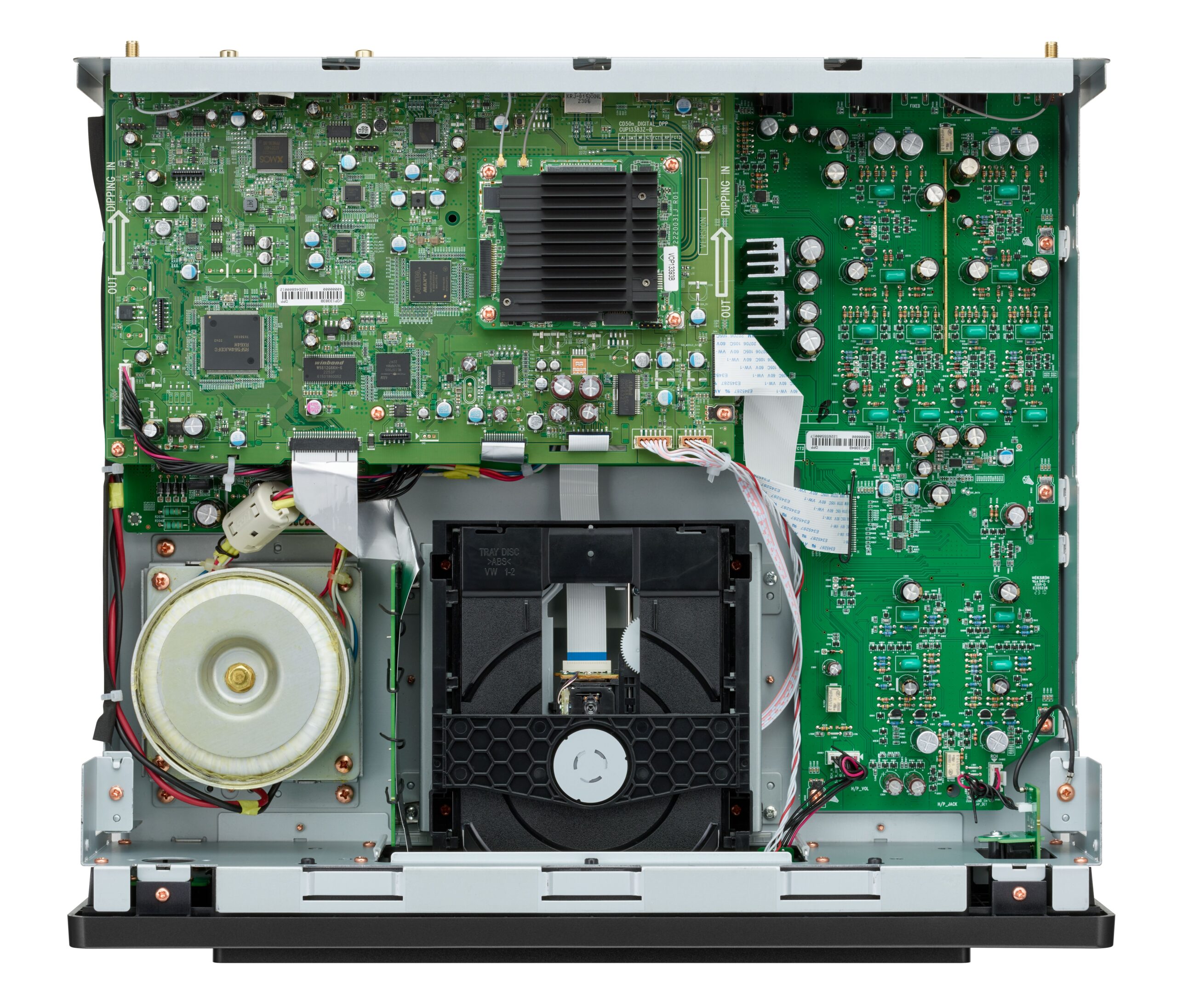
Just like the SACD 30n, you can choose between sharp roll-off and slow roll-off in the filter, which gives either a very short impulse response or a slow impulse roll-off. Try it yourself. The difference is quite subtle, but it’s very noticeable on some recordings. The filters can be used for both CD playback and network streaming.
Smooth and dynamic
Since Tidal added the FLAC catalogue in addition to the MQA that was already there, support for the MQA format has become less important.
The player does not support MQA, but supports 24-bit/192 kHz resolution from DSD or FLAC files. When streaming from Apple Music, 24-bit/96 kHz ALAC files, or Apple Lossless as it is also known, are supported.
Qobuz users with a hi-res subscription can play WAV and FLAC files at up to 24-bit/192 kHz and ALAC at 24-bit/96 kHz.
Spotify is hardly worth mentioning as they don’t yet support any high-resolution audio formats.
When the first CD disappeared into the drawer, I didn’t expect the CD 50n to sound so close to the SACD 30n. Or so close to high-end players like the Hegel Viking, for example. Because the Marantz player is really something special and by far the best network player with CD since the SACD 30n.
Amber Rubarth’s Full Moon In Paris was recorded with some ambient noise in the background – bordering on annoying. But here, the soundscape is open and so rich in timbre that the noise is perceived as just that. And it is: Background sounds, not noise. The soundstage is wide and deep, and there is no lack of weight or dynamics in the bass. A Hegel Viking has greater dynamic contrast and faster transient response, but the difference is marginal.
On Scarlatti’s Sonata in C major (K406), you hear the full timbre of the Steínway grand piano, right down to the lowest octave. It sounds powerful, impressive and very appealing. The soundstage is as smooth as silk and surprises with lightning-fast dynamics and superb resolution.
There is no difference when I stream over the network.
The atmosphere on Agnes Obel’s The Curse spreads like a soft carpet in the room, the cello sound is deep, dark and the vibrations from the strings are so full of life that you can only close your eyes and enjoy. If I’m being picky, I would have liked a little more snap in the transients from the piano on the live recording with Keith Jarrett from Blue Note in New York. But at the same time, the recorder manages to place the performers on the recording rock solid in a big soundstage, so I forgive it.
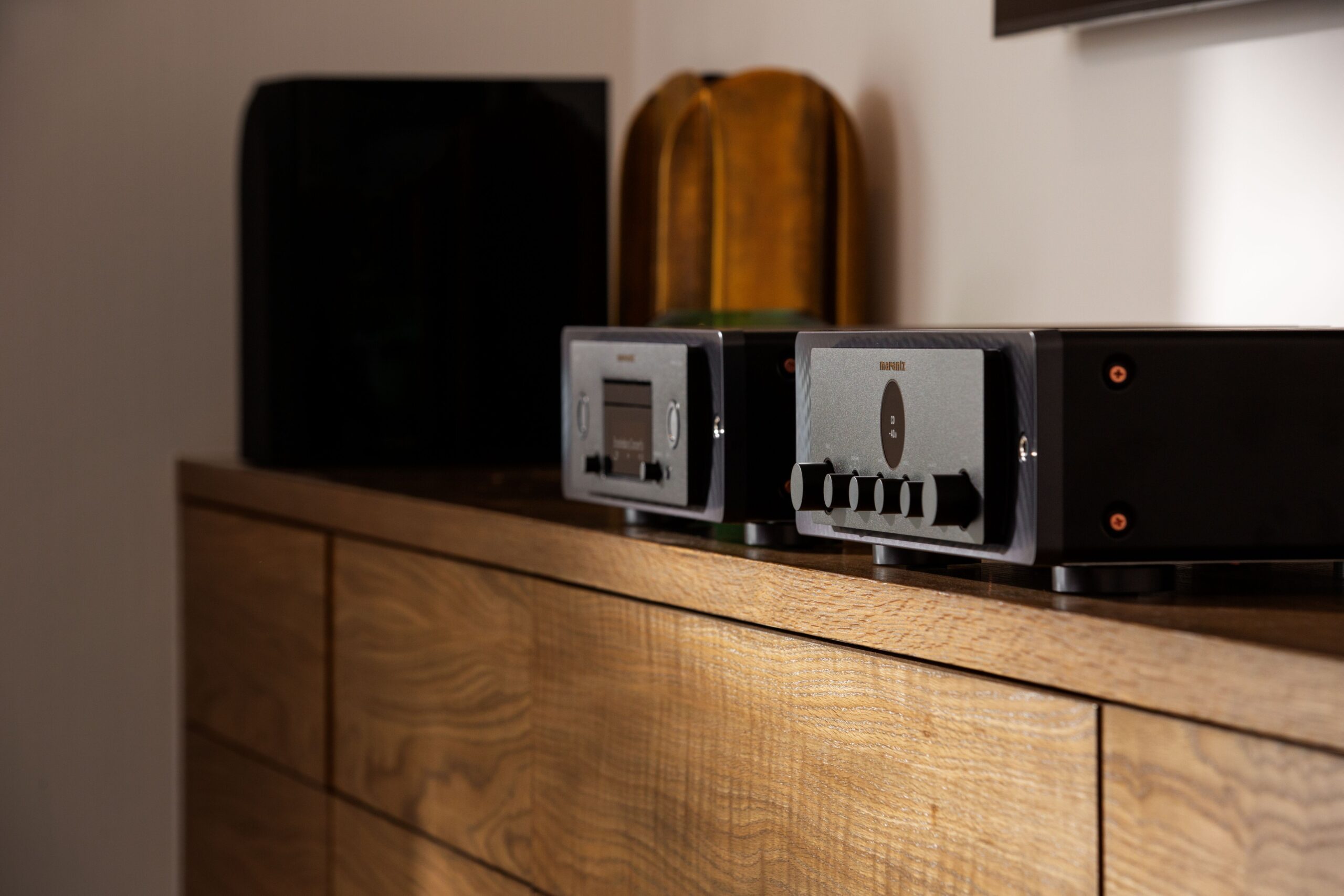
The much rockier Bite My Head Off from the Rolling Stones’ latest album sounds like it was recorded by a bunch of 19-year-olds with cheap instruments in their dad’s garage. But it swings tremendously, simply because the song is good and the player delivers the dynamics of the percussion with conviction. The laid-back Tell Me Straight from the same album isn’t a revelation for those with keen hi-fi ears, but it works because the Marantz player gives the music a natural warmth that makes the recording more vibrant and enjoyable.
The dynamics of Roy Hargrove’s The Love Suite: In Mahogany, are well handled. Hargrove’s sudden jolt of the horn will make you squirm on the sofa, but it’s never harsh, stabbing or sharp. Just perfectly balanced.
Conclusion
If you don’t need an SACD player, the CD 50n is a better buy than the SACD 30n. In this way, Marantz has created a problem for itself, because the CD 50n costs much less, is almost as well equipped – and has HDMI input for the TV sound. There are only slight differences in sound quality, and both are perfect combinations of CD and network player. The Marantz CD 50n may lack that one per cent in dynamic contrast, but you have to ask yourself if it’s worth paying so much more for so little.
The Marantz CD 60 is a smash hit in the centre of the market for those who want a better CD player.

We think
The design stands out and the sound quality is exceptional for its class. HDMI is a welcome bonus, and with HEOS, streaming in high sound quality is a breeze. Occasionally slow to respond to commands.
1800 €
Specifications
- Type: CD player with network streaming
- DAC: 32-bit/392 kHz PCM via USB, 24-bit/192 kHz DSD/FLAC, 24-bit/96 kHz ALAC
- Outputs: Variable and fixed unbalanced, optical/coaxial digital
- Inputs: HDMI, optical/coaxial digital, USB, Ethernet
- Headphone output: Yes
- Wireless: WiFi, Bluetooth, Airplay 2, Heos multiroom
- Streaming services: Spotify Connect, Tidal, TuneIn
- Other: Remote control, Roon tested, HEOS app
- Colour: Champagne, black
- Dimensions/weight: 44.2 x 42.4 x 13 cm/10.3 kg
- Web: Marantz.com
